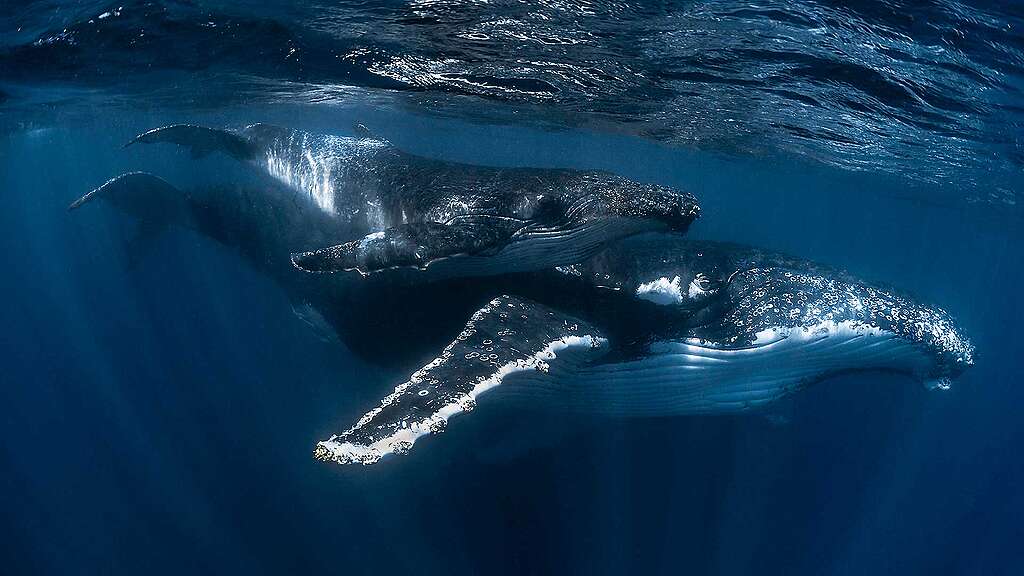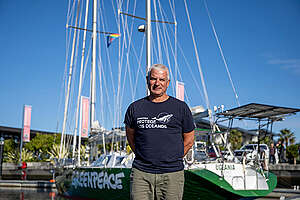Well before I became a member of the Greenpeace crew, I grew up on the stories of mighty campaigning vessels like the Rainbow Warrior, and their incredible work around the world to protect our beautiful blue planet.
From challenging whaling through direct confrontations with whaling ships; confronting nuclear testing, and protecting our oceans from overfishing, I knew the formidable power of Greenpeace boats to hold polluters to account and expose environmental crimes at sea. In fact, growing up in Perth in the 80s, I had a poster of the Rainbow Warrior on my wall.
So it was a particularly unforgettable moment for me this week, when under the wide blue Queensland sky, we held the launch ceremony for the SV Oceania, Greenpeace Australia Pacific’s new campaigning vessel and the first bluewater Greenpeace ship to be permanently stationed in our region.
Made possible by the extraordinary generosity of our supporters, our new ship is now refitted and ready for campaign operations; newly painted in Greenpeace’s hallmark green and rainbow livery.
Australia Pacific’s oceans face multiple threats, including offshore gas drilling, deep sea mining, overfishing, plastic pollution and climate damage. Oceania creates a dynamic new capacity for Greenpeace to expose, document, and peacefully confront these and other threats to the oceans in our region. It will also help deepen and strengthen our relationships with Pasifika communities, who are not only on the frontlines of the climate crisis but are leaders in finding climate solutions.
It’s one of the most significant moments for Greenpeace Australia Pacific’s history; our organisation was born in Albany, Western Australia, where our very first action blockading a whaling station with small zodiac boats ultimately helped end whaling in Australia.
Now, Oceania is set to soon cast off the lines and begin the 3500 nautical miles-long trip to the heart of Australia’s biggest climate fight in Western Australia, where fossil fuel giant Woodside is starting their offshore gas development, which will emit 6.1 billion tonnes of pollution—the Burrup Hub. This monstrous project is not only the most climate-polluting project proposed in Australia, but also a direct and dire threat to magnificent marine ecosystems like the Scott Reef, home to incredible wildlife like turtles, whales, and other endangered species.
We’ll sail to WA to connect with all those who want to see our climate and our oceans safe from such monstrosities; those who are calling for a better, brighter future for Western Australia—not a doubling down on more toxic gas drilling by the likes of Woodside.
And at every stage of the Oceania’s voyage and every step of this and all future missions, we will be thinking with gratitude of all those who made it possible.

Woodside plans to drill up to 80 gas wells off the coast of WA in some of the world’s most biodiverse waters – including 50 wells around Scott Reef. Pristine coral reefs, pygmy blue whales, endangered turtles and countless other marine life in Western Australia’s oceans are all at risk. We have the tools to stop Woodside. With your power behind us, we will.
Sign petition
